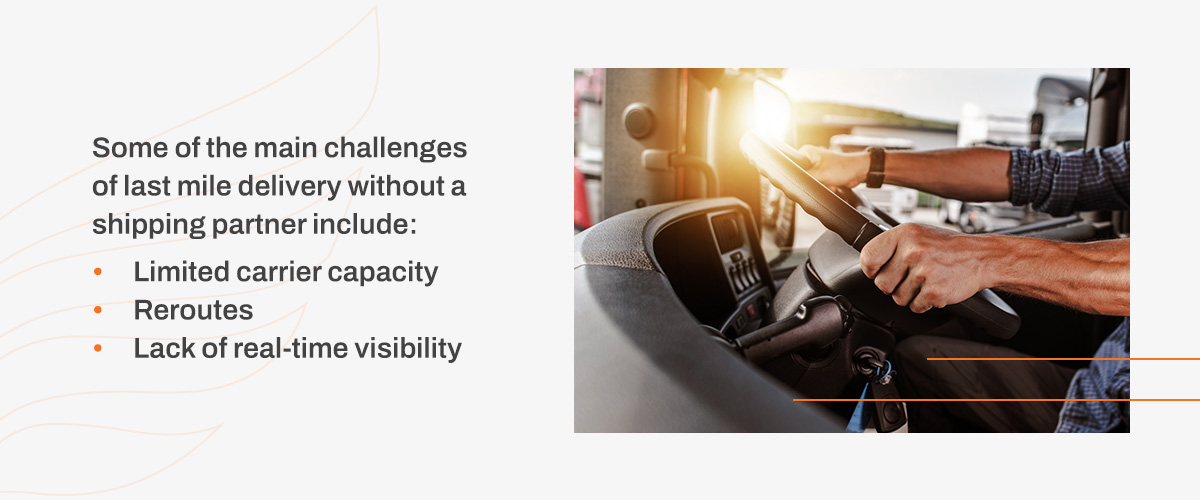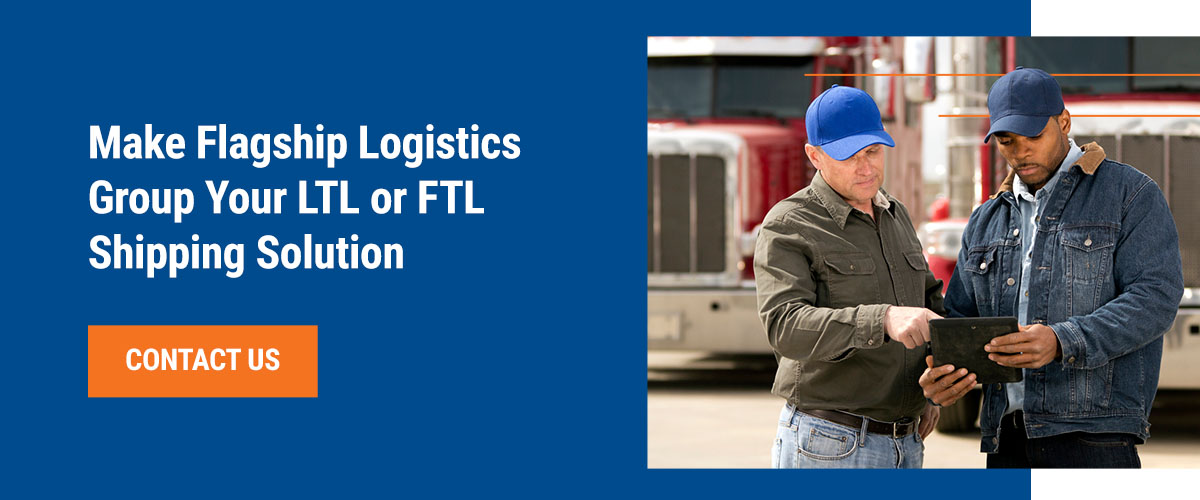Table of Contents
1. Last Mile Delivery Definition
2. How Does the Final Mile Delivery Service Work?
3. Last Mile Delivery Companies
4. The Last Mile Problem
5. Last Mile Delivery Solutions
What Is Last Mile Delivery?
As someone involved or interested in the shipping of goods to customers, it’s important to keep up with the latest shipping trends and customer expectations. Today, LTL shipping transit time options can vary, so confirming carrier availability for your pallet(s) is commonplace. You need to know more about every phase of the shipping process to meet your customers’ needs, including last mile delivery.
Last Mile Delivery Definition
Last mile delivery, or final mile delivery, is the last stage of the delivery process. This moment is when a pallet(s) reaches its final destination after it leaves its last transportation hub. The final destination is either a business or warehouse.
Last mile delivery is perhaps the most crucial step in the entire delivery process, as it’s when the customer finally receives their order. Efficient last mile delivery helps you keep up with the increasing customer demand for quick shipping times. On-time last mile delivery is the most important factor for your business. As a result, quality, trustworthy and proven on-time delivery performance is a must when selecting a transportation company.
How Does Final Mile Delivery Service Work?
Here’s a breakdown of the entire shipping process to see where final mile delivery fits in:
- Step 1: The process starts right after the customer places their online order. The order goes into a digital centralized system. Once the shipper receives the order, they pack it. Both the consignee and the shipper can monitor the order’s status. The consignee most likely receives a tracking number to know where their order is at all times.
- Step 2: Next, the pickup and delivery appointments are secured by the transportation company. You can consider this to be the start of the last mile shipping process, as the goal is to get the order from the shipper to the consignee as quickly as possible.
- Step 3: In this step, personnel scan and load the order onto the correct delivery truck. The outbound truck is planned based on all the deliveries for the route to the final consignee location. This step is a big part of optimizing routes to get the best value possible for your last mile delivery services and ensuring the consignee understands their package’s status.
- Step 4: The process is finished when the order reaches its final delivery destination, and the driver obtains proof of delivery. The carrier updates the tracking information to confirm and notifies the customer(s) that the delivery was a success.
Last Mile Delivery Companies
Many companies seek to provide last mile delivery services. They strive to optimize these services to ensure the greatest levels of customer satisfaction so that one-time buyers become repeat customers.
If you’re wondering whether your business needs to start thinking about its last mile delivery services, here’s a list of some of the most common types of businesses this shipping topic applies to:
- Third-party logistics companies
- Mail carriers
- Couriers
- Food delivery companies
- Direct-to-consumer model retail companies
- Department stores and supermarkets that offer delivery
- Florists
- Pharmacies that offer delivery
- Restaurants with delivery options
- Ecommerce sites
- Non-emergency medical transport businesses
Whether you partner with a third-party shipping provider or handle your shipping internally, the chances are high that optimizing your last mile delivery is important if you’re involved in one of the above businesses.

The Last Mile Problem
Today’s customers expect shipping that’s fast and even free. This expectation is a paradox for businesses trying to save time and money on shipping while keeping their customers happy and satisfied with the shipment of their orders.
Some of the main challenges of last mile delivery without a shipping partner include:
- Limited carrier capacity: When a carrier lacks the capacity to meet shipping demands, last mile delivery becomes inefficient. Rather than delivering every order to every destination in a single route, a driver has to make multiple trips to and from the facility to deliver every package — efficiency plummets as a result. Solving this challenge is a matter of working with a dedicated transportation company that has the capacity to deliver pallets on a tight schedule.
- Reroutes: Obstacles like bad weather or heavy traffic can lead to reroutes that are more indirect and less efficient. When on-time delivery is a priority, these reroutes can disrupt business goals. A reliable transportation company will have a proven record of on-time delivery despite these challenges.
- Lack of real-time visibility: When a delivery truck is on the road, customers want to know where their pallets are and when they can expect them to arrive. If a company lacks real-time visibility about a delivery, customers may feel limited trust during the delivery process and doubt the arrival of their orders. The right transportation company will provide shipment tracking and ongoing communication to ensure all parties involved understand where a shipment is on its route.
Optimize Your LTL/FTL Shipping Process
Last Mile Delivery Solutions to Achieve Better Customer Satisfaction
With the potential issues, time expenses and monetary costs associated with last mile shipping, you need solutions to help you streamline your process and increase customer satisfaction. Here are some suggestions to consider:
- Improve shipping schedules: Projected schedules for delivery play a valuable role in customer satisfaction. Overpromising on delivery times can leave customers unsatisfied, so you need confirmation that your shipping schedules are backed by evidence of driving conditions, the size of the load and more.
- Streamline reverse logistics: A streamlined return process is just as valuable to customer happiness as efficient delivery. Your team needs to be prepared to pick up orders and process them for returns to refund customers quickly and accurately.
- Introduce supply chain transparency: Understanding where shipments are in the transportation process is critical to on-time delivery and customer satisfaction. The right technology can offer insight into your supply chain that supports efficiency and improved shipment planning.
- Partner with a logistics group: By partnering with a shipping logistics group, you can let go of your shipping responsibilities and let an expert handle them. As a result, you can benefit from a smoother last mile shipping process for your business.
Make Flagship Logistics Group Your LTL or FTL Shipping Solution
Flagship Logistics Group is ready to be your business’s LTL or FTL shipping partner. We always put our clients’ best interests first with 98% on-time delivery performance and excellent customer service. We offer logistics services and warehousing services to ensure we meet your shipping needs at every step of your process.
Contact us today to learn more!

